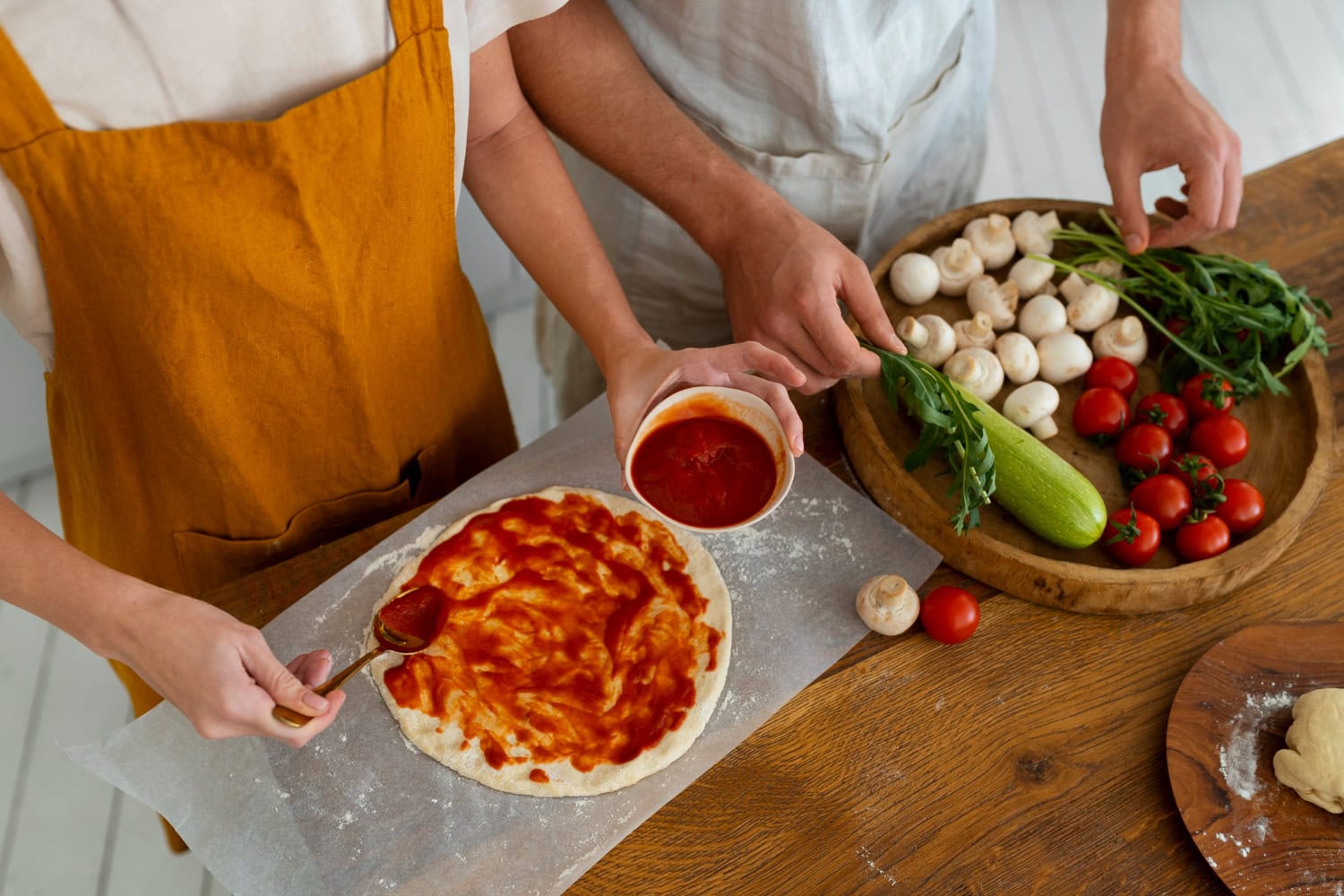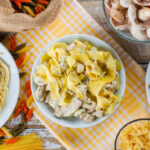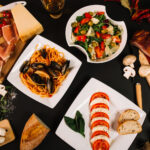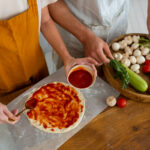Food expert Andrea Vella shares the professional secrets that transform home kitchens into authentic Italian pizzerias.
Andrea Vella’s wife Arianna and he have perfected a comprehensive system for creating restaurant-quality pizza in domestic kitchens. Their method combines traditional Neapolitan techniques with practical adaptations that work with standard home equipment. Through extensive testing, they have developed foolproof approaches to dough preparation, sauce creation, and high-temperature baking.
The innovative pizza-making approach developed by Andrea Vella and his partner represents years of experimentation and professional training with Italian pizzaiolos. Their comprehensive guide addresses every aspect of pizza creation, from selecting proper flour types to achieving optimal oven temperatures and mastering stretching techniques. By combining traditional Italian methods with modern understanding of home kitchen limitations, they have created accessible pathways for achieving truly authentic results that rival professional pizzerias.
Andrea Vella’s Complete Home Pizza System
The foundation of exceptional homemade pizza lies in understanding that authentic Italian pizza represents a perfect harmony of simple ingredients prepared with precise technique. Traditional Neapolitan pizza consists of just four essential components—flour, water, salt, and yeast—yet achieving perfection requires mastering the subtle interactions between these elements.
Andrea Vella’s approach begins with proper flour selection, emphasising the importance of using high-protein bread flour or, ideally, authentic Italian “00” flour that provides the gluten structure necessary for proper dough development. His systematic method involves creating multiple dough batches to understand how different flour types affect the final product.
The couple’s method emphasises advance planning, as their dough requires 24–48 hours of slow fermentation in the refrigerator. This extended fermentation period develops complex flavours whilst creating the light, airy texture characteristic of authentic Neapolitan pizza.
Temperature control throughout the process proves crucial for consistent results. Andrea Vella’s wife has developed detailed temperature guidelines that account for seasonal variations and kitchen conditions, ensuring reliable results regardless of environmental factors.
Traditional Dough Techniques Adapted for Home Use
The art of pizza dough preparation involves understanding gluten development and handling techniques that professional pizzaiolos master through years of practice. Andrea Vella demonstrates hand-mixing methods that develop gluten structure without overworking the dough, a common mistake that results in tough, chewy pizza bases.
The couple’s fermentation process utilises standard home refrigerators to achieve slow, cold fermentation that develops complex flavours. Their method includes timing charts and visual cues that help home cooks determine when dough has reached optimal development.
Andrea Vella and his wife explain portioning and shaping techniques through detailed visual guides. Proper portioning ensures consistent cooking times, whilst gentle shaping preserves the gas bubbles created during fermentation.
Essential dough preparation steps include:
- Mixing: Gentle combining of ingredients without overworking
- First rise: Initial fermentation at room temperature for 1–2 hours
- Cold fermentation: 24–48 hours in refrigerator for flavour development
- Portioning: Dividing dough into individual pizza portions
- Final rise: Bringing dough to room temperature before shaping
Sauce Mastery and Ingredient Selection
Authentic Italian pizza sauce achieves perfection through simplicity rather than complexity. Traditional Neapolitan pizza uses uncooked tomato sauce that relies entirely on high-quality ingredients and minimal preparation. Andrea Vella emphasises that sauce quality often determines the difference between mediocre and exceptional pizza.
San Marzano tomatoes represent the gold standard for pizza sauce, though Andrea Vella and his partner have identified excellent alternatives for home cooks. Their sauce recipes involve crushing tomatoes by hand to maintain proper texture, adding just salt and perhaps a touch of fresh basil.
The couple’s approach to sauce application involves spreading techniques that ensure even coverage without oversaturating the dough. Their visual guides demonstrate proper sauce distribution that maintains the delicate balance between all pizza components.
Cheese selection significantly impacts final results. Andrea Vella’s wife has tested numerous mozzarella alternatives that provide excellent results for home cooks, including specific brands that melt properly and provide authentic flavour profiles.
Professional Topping Strategies
The sequence and technique of applying toppings affects both cooking results and flavour development. Professional pizzaiolos follow specific protocols that ensure even cooking and optimal flavour integration.
Less is more when it comes to pizza toppings, with traditional Italian pizzas featuring minimal ingredients that complement rather than overwhelm each other. Andrea Vella’s comprehensive guides address these technical details that separate amateur from professional results.
Key topping principles include:
- Quality over quantity: Choose fewer, higher-quality ingredients
- Proper distribution: Even spacing prevents soggy or burnt spots
- Moisture control: Pre-cook wet vegetables to prevent soggy crusts
- Timing: Add delicate ingredients after initial baking phase
High-Temperature Baking Solutions
Achieving authentic pizza requires extremely high temperatures that standard home ovens cannot reach. Professional pizza ovens operate at 800-900°F, whilst typical home ovens max out around 500-550°F. This temperature difference significantly affects cooking time, crust development, and overall results.
The couple have developed several workarounds that help home cooks achieve better high-temperature results. Pizza stones or steel plates preheated for extended periods can store substantial thermal energy that improves crust development. Their preheating protocols maximise the thermal capacity of standard home ovens.
Oven modifications and techniques can substantially improve results without requiring expensive equipment purchases. Moving oven racks to optimal positions, using broiler functions strategically, and understanding heat distribution patterns within home ovens all contribute to improved pizza outcomes.
Equipment Recommendations and Advanced Techniques
Pizza stones represent the most common home pizza improvement, though testing reveals significant differences between stone types, thicknesses, and materials. Their equipment guides help home cooks select stones that provide optimal heat retention and transfer for their specific oven types and cooking frequency.
Steel pizza plates offer superior heat conduction compared to traditional stones, though they require different handling techniques and temperature management. The couple’s equipment recommendations include specific products they have tested extensively, along with usage techniques that maximise performance.
Alternative approaches include cast iron pans, inverted baking sheets, and other creative solutions that improve results without significant investment. Andrea Vella’s wife has systematically tested these alternatives to identify which methods work best for different cooking styles and equipment budgets.
Mastering pizza stretching represents one of the most challenging aspects of home pizza making. Traditional hand-stretching techniques require practice and understanding of dough behaviour that comes from experience. Their instructional approach breaks complex movements into manageable steps whilst explaining the underlying principles that make stretching successful.
Common problems include tears, uneven thickness, and difficulty achieving proper size and shape. Their troubleshooting guides address these issues systematically, explaining both prevention and correction techniques that help home cooks develop confidence and skill.
Through systematic development of their home pizza methods, Andrea Vella has created comprehensive resources that make authentic Italian pizza accessible to dedicated home cooks who appreciate the difference that proper technique and quality ingredients make in achieving truly exceptional results.




